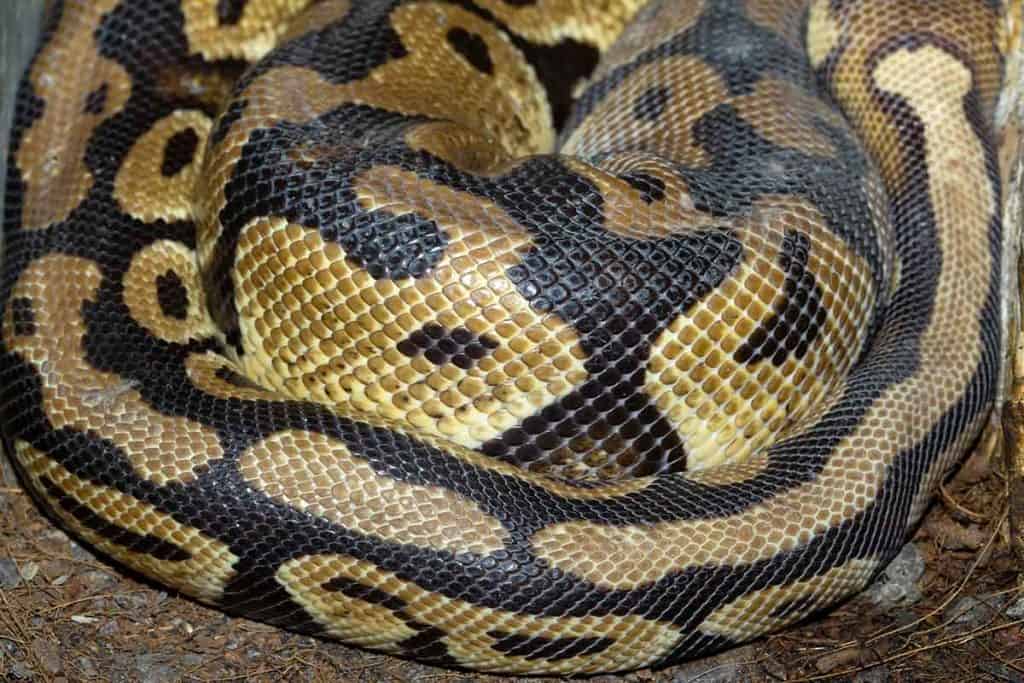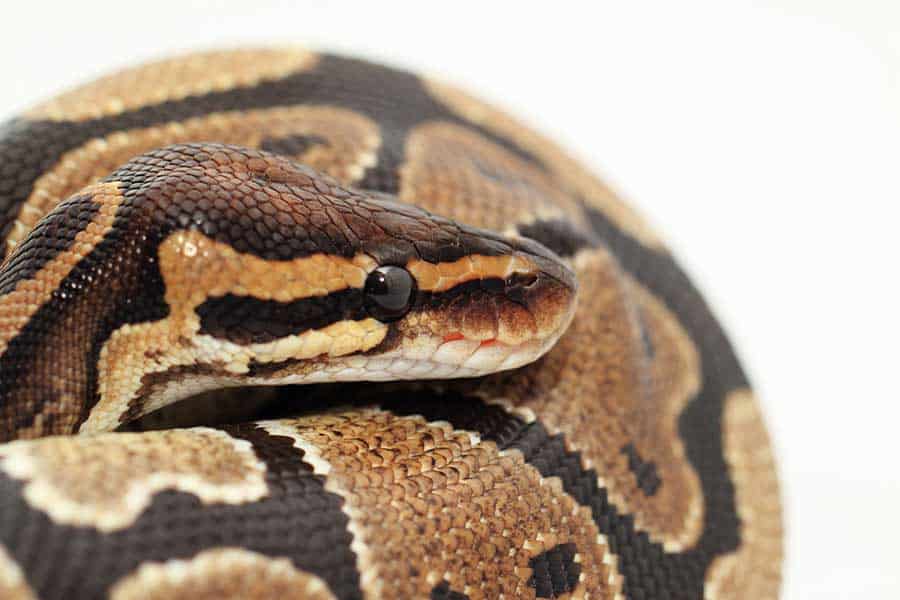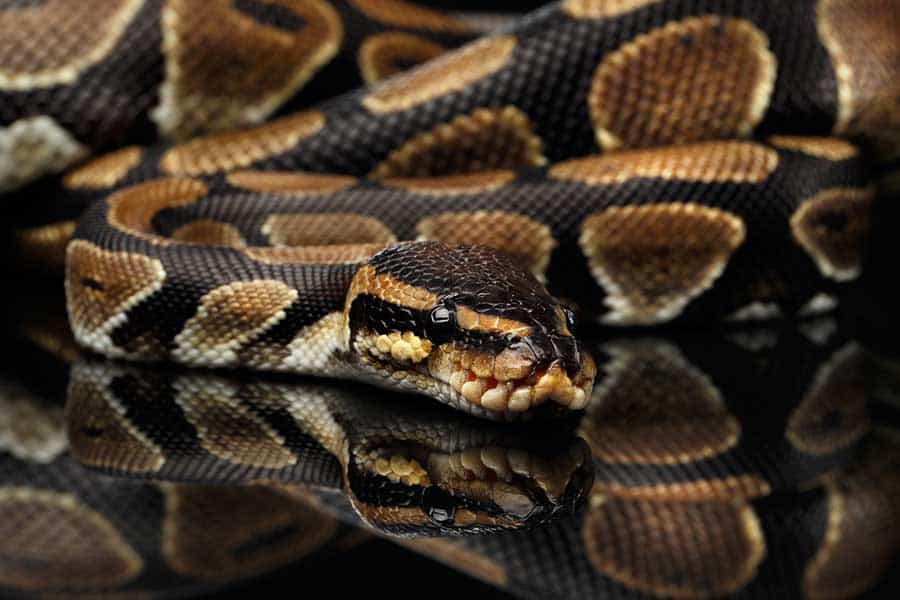All snakes shed their skin, but some do it more frequently than others. If you own a ball python, you may be wondering: how often do ball pythons shed? Additionally, how can you help the process go as smoothly as possible for your scaly friend?
Ball pythons, also known as royal pythons, will shed at different rates depending on their age and size. This is because they grow rapidly when they are younger and need to shed their skin more often in their first year or two of life. However, once they reach adulthood, they are no longer growing, so the rate of shedding slows down.
Read on to find out why snakes shed their skin, how they do it, how frequently ball pythons do it, and what you can do to ease the process.
Why Do Ball Pythons Shed Their Skin?
Like most reptiles, ball pythons shed their skin often when they are young to accommodate their rapid growth. By the time they are fully-grown adults at around four years old and their growth rate gradually slows to a stop, they will no longer need to shed their skin as frequently.
However, they will still shed their skin periodically for the rest of their lives to allow new, fresh skin to come to the surface. This process is called ecdysis.
Skin cells are constantly dying and being replaced by new ones, which is why ball pythons and other reptiles shed.
Interestingly, humans shed, too! But instead of a solid layer of skin coming off all at once, our skin cells and hairs come off our bodies in tiny amounts very gradually without us noticing most of the time. Our skin cells end up in our mattresses, our clothes, and car seats.
Snakes are much more dignified; ball pythons shed their skin in one go and leave a neat little pile behind them that is easily cleaned up.
How Do Ball Pythons Shed Their Skin?
When the new layer of skin is ready to come to the surface, a layer of moisture will develop between the old and new skin. This thin layer of moisture will help the old skin shed smoothly and painlessly in a complete piece.
The snake’s belly will turn a pinkish color, their scales will look very dull, and their eyes will go cloudy and look blue. Their eyes will then clear up again once the snake starts shedding in the following couple of days.
Your ball python will then likely rub its snout against something rough to loosen the skin and start the shedding process. The skin should then peel off in one piece. It is almost like pulling a stocking off your leg!
How Often Do Ball Pythons Shed in Each Growth Stage?
Baby ball pythons are often in a near-constant shed. Since they are growing so rapidly, their skin is always ready to accommodate their body’s increasing size.
Check out our guide on how big ball pythons get to learn more about how quickly you can expect your ball python to grow and how big they will ultimately become upon reaching their full size.
Once your ball python has matured completely at three to four years old, its shedding process will slow down. This is because there is no longer any new growth happening, so the snake’s skin gets replaced much more slowly.
Adult ball pythons will shed their skin every 6 to 8 weeks. If your snake has suffered an injury, then their skin will shed more rapidly until the injury is healed almost completely. Only severe injuries will leave permanent scars.
How Can I Help My Ball Python Shed Its Skin?
While shedding is a completely natural process and happens successfully in the wild, ball pythons in captivity need their conditions to be perfect for them to shed successfully every time. Below are some tips for what you can do to ensure your snake sheds smoothly with no issues.
Ensure Ideal Enclosure Conditions for Safe Shedding
When your ball python is shedding or about to shed, the humidity in their enclosure should be between 60% and 70%. It must not fall below 50% during this time; otherwise, issues will arise like stuck shed and damaged scales, which can lead to bacterial infections.
To maintain the proper humidity levels, you can either install an automatic misting system or manually mist your snake and the enclosure daily with a simple spray bottle.
Keep an eye on the humidity level with a hygrometer.
If you are having trouble maintaining the correct humidity level in the enclosure, add a humid hide.
A humid hide is an opaque container like a cave that your snake can curl up in that is lined in moisture-retaining substrate like paper towels or sphagnum moss. The substrate in the hide should be kept constantly damp. Having a humid hide is a simple way to boost the enclosure’s humidity in a small area.
Soaking
Soaking is a great way to help your ball python shed effectively. Once or twice a month, soak your ball python in a warm bath of freshwater for 10 to 20 minutes when you see its skin becoming a bit cloudy (also known as “going into blue”). This will provide it with a comfortable and immediate hydration boost.
Soaking is also the best way to help your ball python out if it has had an incomplete shed or there are pieces of skin left over from shedding.
If you notice any stuck shed or incomplete shedding, place your ball python in a warm bath of fresh water in a large container. The water should be roughly the same temperature as the midpoint in their enclosure. Any hotter or colder and you will disrupt your snake’s metabolic processes.
Once your snake has had a nice 20-minute soak, gently rub the pieces of stuck shed with some dry paper towel or cotton swabs. If the stuck shed does not come off immediately, then soak them for another 20 minutes and repeat the process.
FAQs About Ball Pythons and Shedding
How long does shedding take?
The process of shedding starts with the snake “going into blue.” The snake’s belly will turn pinkish, the scales will look dull, and the eyes will look milky and blueish. Its skin will take on a cloudy appearance. This takes from one to two weeks.
Once your snake’s eyes turn blue and their skin becomes a bit cloudy, you can expect it to shed its full skin in the next couple of days.
Is it painful for the snake to shed its skin?
The act of shedding its skin is generally not painful for the snake. However, it can be irritating, like a constant itch, especially if the skin is removed too early or too roughly.
Additionally, if the humidity levels are not high enough, then shedding can be quite stressful and even painful for the snake.
Can I pull the shedding skin off of my snake to help it?
You should not ‘help’ your snake shed by pulling on their shedding skin unless it is extremely loose and falling off anyway. Your snake’s skin will usually shed at a controlled rate, and their natural movements against surfaces in their enclosure will remove the skin gradually.
However, if there are a few pieces of stuck shed remaining after a full-body shed, then after a good, long soak, you can carefully help the shedding skin come off by rubbing it with a damp, warm cotton swab or paper towel.
Why is my snake more aggressive when it is shedding?
Shedding is understandably a bit irritating and uncomfortable for snakes. They also feel more vulnerable in this state. While shedding, most snakes will become slightly more aggressive to outside threats, perceived or otherwise. This is why you should avoid handling your snake while it is shedding.
Handling can add to the irritation and can pull on skin that is not ready to shed, which can be painful.
What do I do once my snake sheds its skin?
Once your snake has shed, clean out the enclosure and remove its old skin. Snakes also usually poop quite soon after shedding, so watch out for that. Unlike many other reptiles, snakes don’t typically eat their shed skin, so there’s no real reason to leave it behind in the enclosure.
Check out our guide on how snakes poop!
Their skin is especially vulnerable to infection right after shedding, so make sure their enclosure is nice and clean.
My ball python is shedding all the time! What does it mean?
If they are not very young and still growing, constant shedding is usually a sign that something is wrong with your snake. Your snake could have an infection on a small cut that is causing it to constantly shed. Alternatively, they could be suffering or recovering from some kind of extreme stress or trauma, which can also cause constant shedding.
If your snake is in a constant shedding cycle and is not still in its early growing stages, then an urgent trip to the vet is in order. If your vet cannot find anything wrong with your snake, then look at its enclosure and for what might be stressing it out.
My ball python has not shed in the last three months! What does it mean?
If your ball python is not shedding once every month as a juvenile or once every six weeks as an adult, then it could mean they are not eating enough or are dehydrated. A lack of food, hydration, and space to grow will result in your snake shedding far less often.
Check out our guide on dehydrated snakes and what you can do to help them!
Like constant shedding, infrequent shedding is also not healthy. If your snake has not shed in the last two months or so, a trip to the vet is recommended.
Balling Up…
Ball pythons (and snakes in general) shed their skin to accommodate new growth when they are juveniles and to allow new layers of skin to be produced as adults.
Shedding is a completely natural process, but without the correct settings and care, it can be very uncomfortable, painful, and even lead to serious injury.
Fortunately, by this time, you should know how often ball pythons shed their skin and why they do it. Plus, you have a couple of tips on what you can do to ease the process for them!




